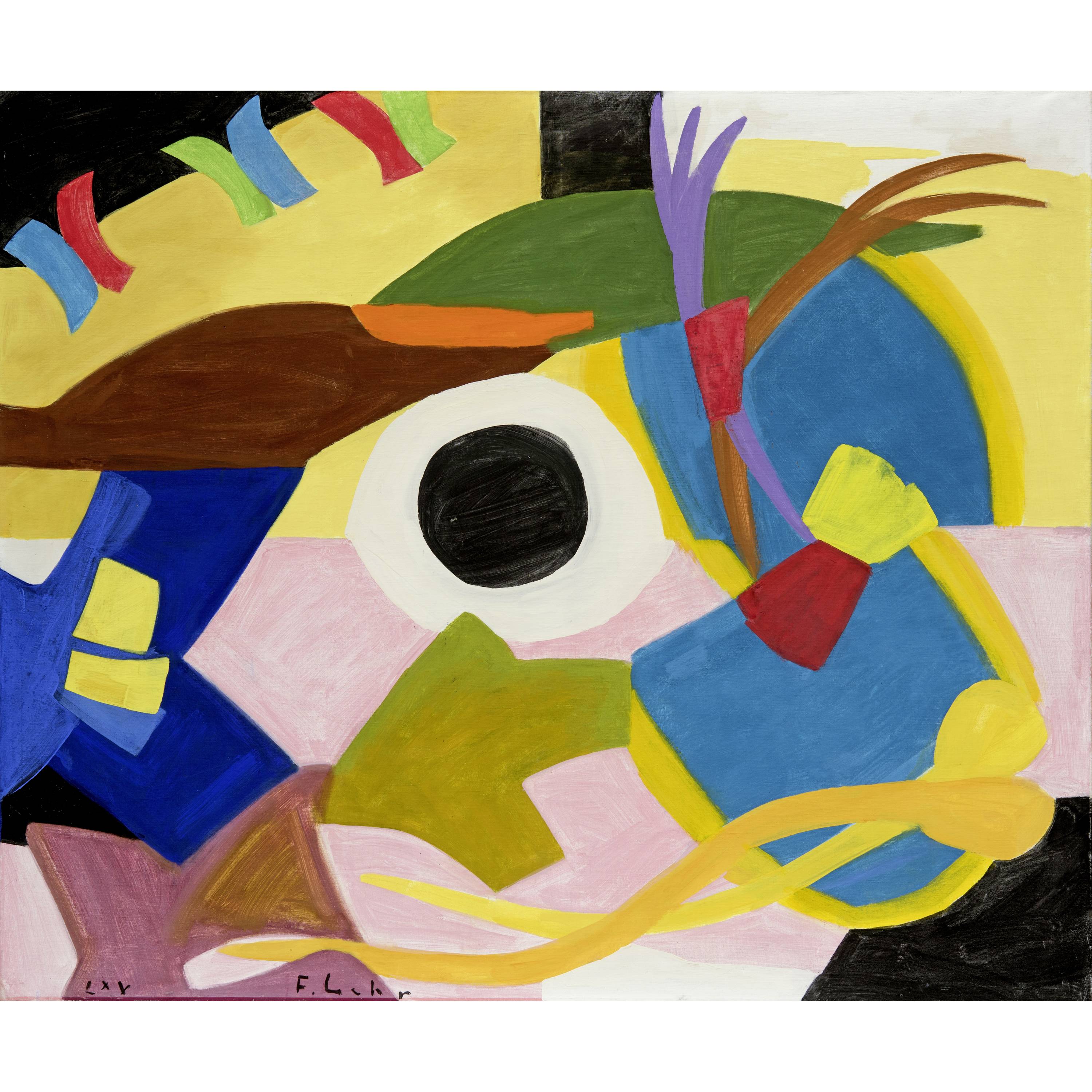- FR
S’inscrire
- Acheter
- Vendre
- Plus
- Galerie
- Commerce d'art
- Maison d'Édition
- Kornfeld aujourd’hui
- L'histoire de la Maison
- Informations
Note : L'image ne peut pas être affichée pour des raisons légales. Pour plus d'informations, voir le PDF du catalogue : Lien vers le PDF
Niederglatt 1896 - 1996 Altstätten
1965
Tempera on canvas
100x120 cm
Dated and signed by the artist in tempera at the lower centre "LXV F. Gehr". Titled on label on the reverse
Private collection Switzerland
Elisabeth Keller-Schweizer, Gedanken zum Thema Eros im Werk von Ferdinand Gehr, in: Ausstellungskatalog Ferdinand Gehr, Fundacao Calouste Gulbenkian Centro de Arte Moderna José de Azeredo Perdigao/Kunstmuseum 2001, pag. 61f.
Lisbon/St. Gallen 2001, Fundacao Calouste Gulbenkian Centro de Arte Moderna José de Azeredo Perdigao/Kunstmuseum, Ferdinand Gehr 1896-1996, Cat. No. 18, pag. 191
On the original stretcher. In very good condition
The depiction appears colourful and confused, areas of colour of different sizes are placed in a circle around a round motif on an upper yellow and a lower pink surface. Elisabeth Keller-Schweizer offers two interpretations: "The form of the two enclosed circles and the colours black and white, together with the central position, point to the absolute, to the divine, whereas the crude and colourful forms of the surrounding swirl of colour point to the human. In addition to this essential reading, however, another, more concrete reading is also quite possible: from a macrobiological point of view, the central motif could be recognised as an egg and the floating lines with heads as seed filaments. World creation and procreation, macrocosm and microcosm overlap in one and the same motif, the divine and the human appear in one and the same."
1965
Tempera auf Leinwand
100x120 cm
Unten in der Mitte vom Künstler in Tempera datiert und signiert "LXV F. Gehr". Rückseitig auf Etikett betitelt
Privatsammlung Schweiz
Elisabeth Keller-Schweizer, Gedanken zum Thema Eros im Werk von Ferdinand Gehr, in: Ausstellungskatalog Ferdinand Gehr, Fundacao Calouste Gulbenkian Centro de Arte Moderna José de Azeredo Perdigao/Kunstmuseum 2001, pag. 61f.
Lissabon/St. Gallen 2001, Fundacao Calouste Gulbenkian Centro de Arte Moderna José de Azeredo Perdigao/Kunstmuseum, Ferdinand Gehr 1896-1996,
Auf dem originalen Chassis. In sehr guter Erhaltung
Die Darstellung erscheint bunt und wirr, verschieden grosse Farbflächen sind auf einer oberen gelben und einer unteren rosafarbenen Fläche kreisförmig um ein rundes Motiv gelegt. Elisabeth Keller-Schweizer bietet zwei Interpretationen an: "Die Form der zwei eingeschlossenen Kreise und die Farben Schwarz und Weiss, zusammen mit der zentralen Lage, weisen auf das Absolute, auf das Göttliche hin, wohingegen die kruden und bunten Formen des umgebenden Farbstrudels auf das Menschliche hinlenken. Neben dieser wesenhaften ist aber auch eine andere, konkretere Lesung durchaus möglich: Aus makrobiologischer Sicht wäre das zentrale Motiv als Ei und die schwimmenden Linien mit Köpfen als Samenfäden zu erkennen. Weltschöpfung und Zeugung, Makrokosmos und Mikrokosmos überlagern sich in ein und demselben Motiv, Göttliches und Menschliches scheinen in ein und demselben auf."
| Suisse | CHF | Offre individuelle |
| Europe | CHF | Offre individuelle |
| Outre-mer | CHF | Offre individuelle |
Note : L'image ne peut pas être affichée pour des raisons légales. Pour plus d'informations, voir le PDF du catalogue : Lien vers le PDF

